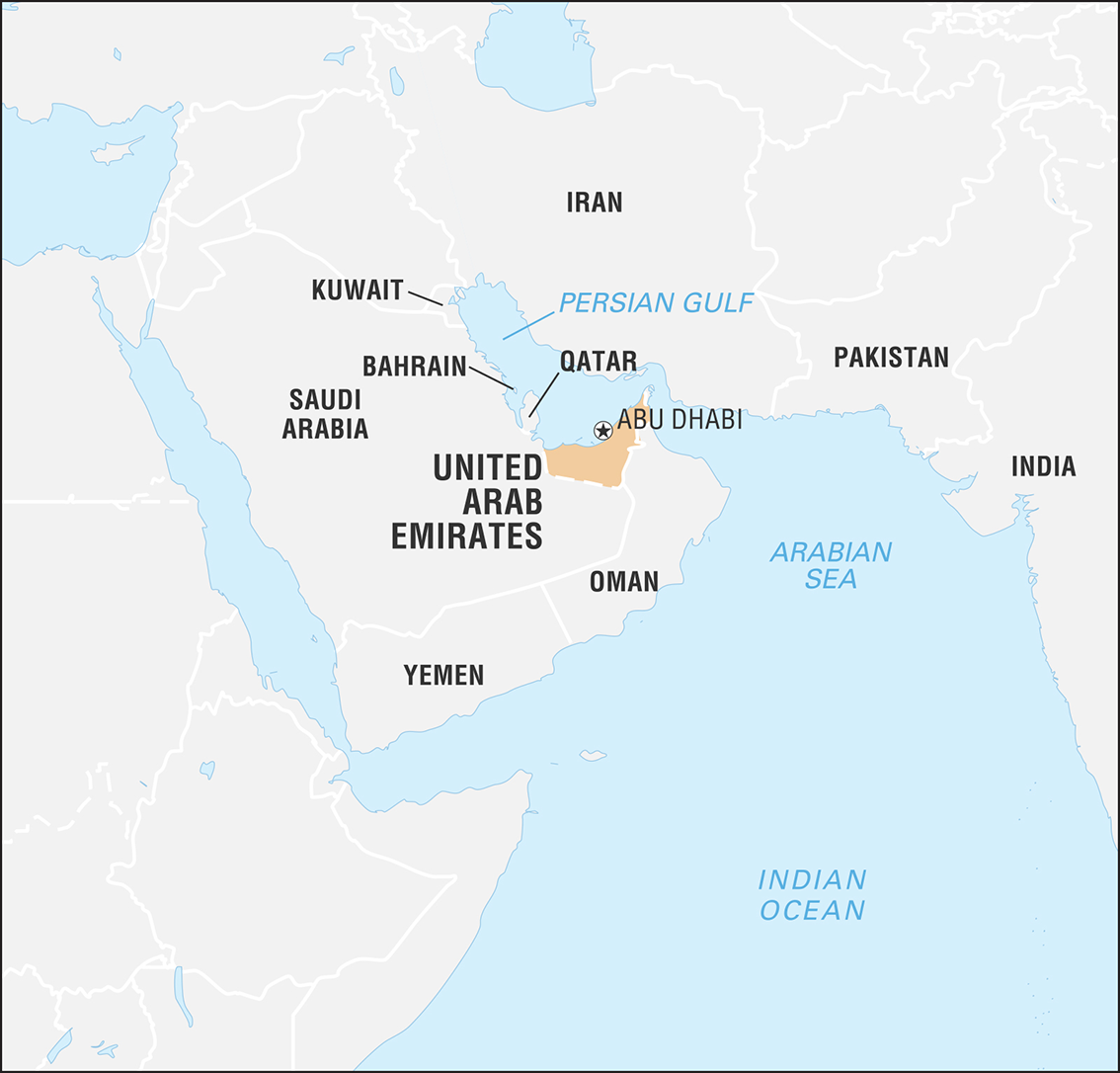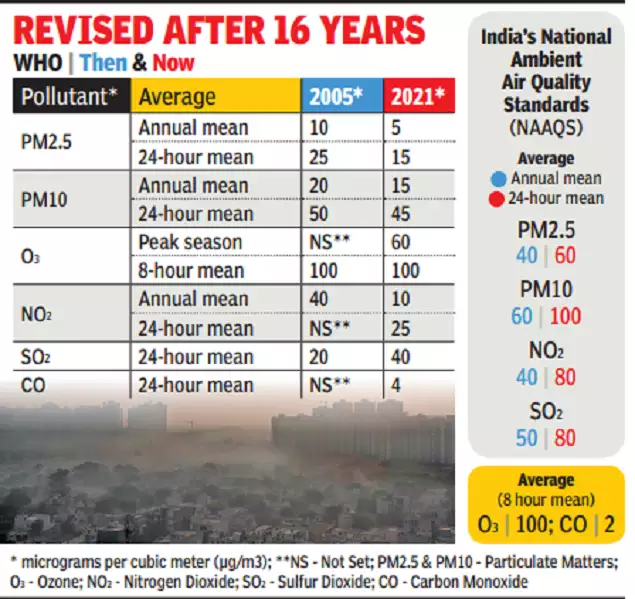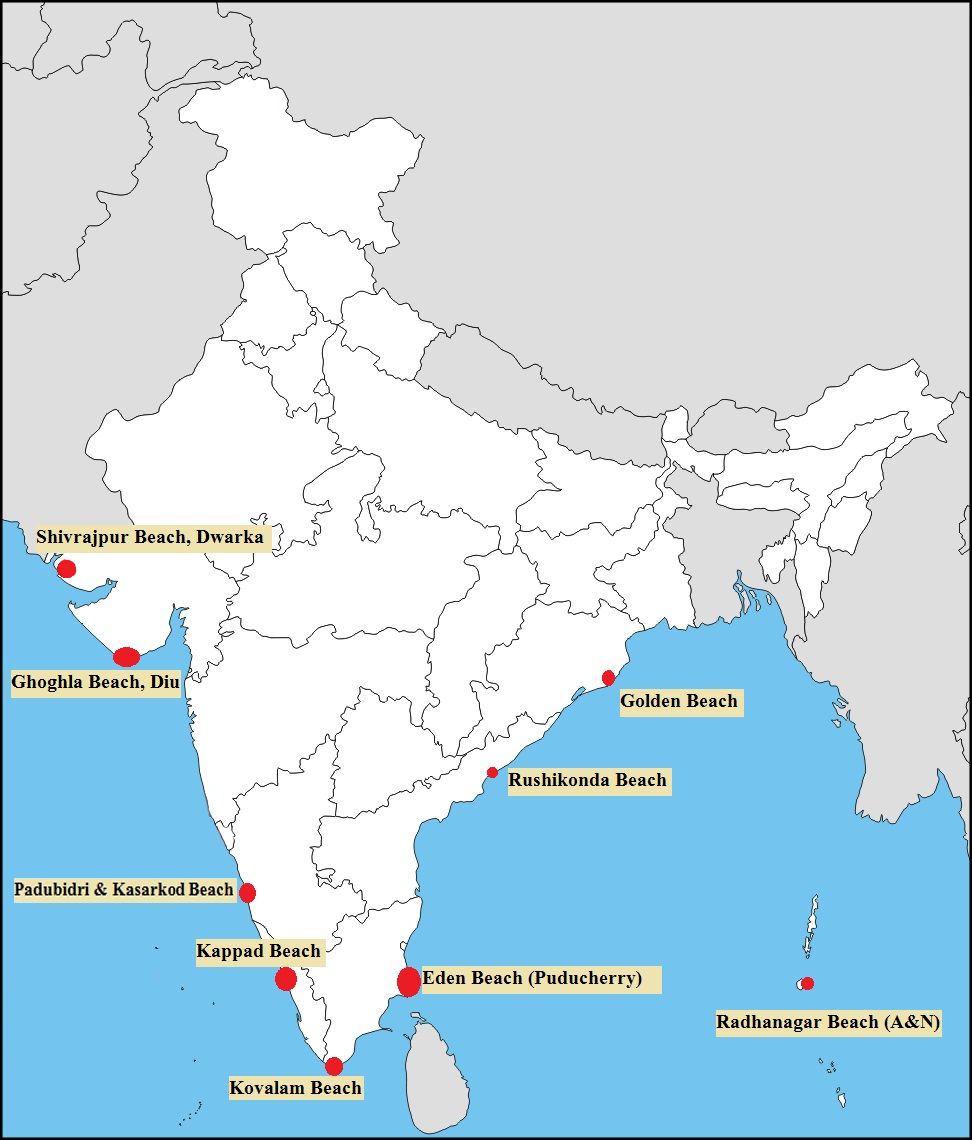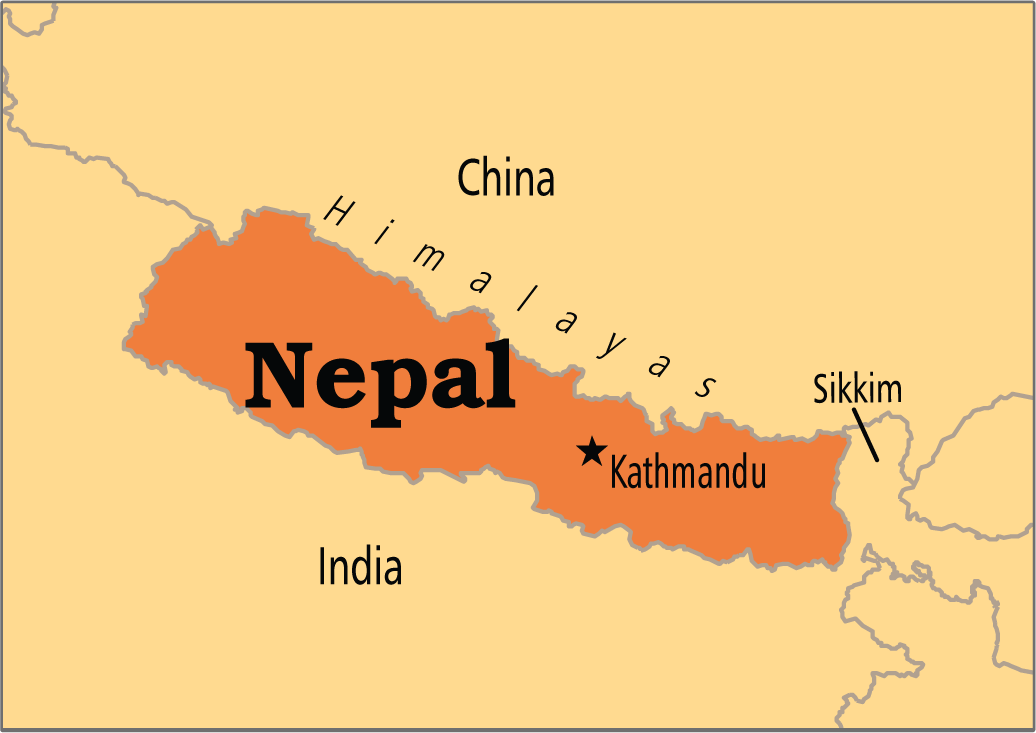International Relations
CEPA: India-UAE
Why in News
Recently, India and the United Arab Emirates (UAE) formally launched negotiations on the India-UAE Comprehensive Economic Partnership Agreement (CEPA).
- Looking to build on the progress made by both countries under the Comprehensive Strategic Partnership signed in 2017, both countries expressed a desire to reach a mutually beneficial economic deal.
Key Points
- Comprehensive Economic Partnership Agreement:
- It is a kind of free trade pact which covers negotiation on the trade in services and investment, and other areas of economic partnership. It may even consider negotiation on areas such as trade facilitation and customs cooperation, competition, and Intellectual Property Rights.
- Partnership agreements or cooperation agreements are more comprehensive than Free Trade Agreements.
- CEPA also looks into the regulatory aspect of trade and encompasses an agreement covering the regulatory issues.
- India has signed CEPAs with South Korea and Japan.
- India-UAE Economic Relations:
- The UAE is currently India’s third-largest trading partner with bilateral trade in 2019/2020 valued at USD 59 billion.
- The UAE is also India’s second-largest export destination after the US, with exports valued at approximately USD 29 billion in 2019-2020.
- The UAE is the eighth-largest investor in India, having invested USD 11 billion between April 2000 and March 2021, while investment by Indian companies in the UAE is estimated to be over USD 85 billion.
- Major Exports: Petroleum products, precious metals, stones, gems and jewellery, minerals etc.
- Major Imports: Petroleum and petroleum products, precious metals, stones, gems and jewellery, minerals etc.
- Significance of India-UAE CEPA:
- It is expected to increase bilateral trade in goods to USD 100 billion within five years of the signed agreement and increase trade in services to USD 15 billion, leading to wider social and economic opportunities in both nations.
Other Types of Trade Agreements
- Free Trade Agreement (FTA):
- It is an agreement in which two or more countries agree to provide preferential trade terms, tariff concession etc. to the partner country.
- India has negotiated FTA with many countries e.g. Sri Lanka and various trading blocs as well e.g. ASEAN.
- Preferential Trade Agreement (PTA):
- In this type of agreement, two or more partners give preferential right of entry to certain products. This is done by reducing duties on an agreed number of tariff lines.
- Tariffs may even be reduced to zero for some products even in a PTA. India signed a PTA with Afghanistan.
- Comprehensive Economic Cooperation Agreement (CECA):
- CECA generally covers negotiation on trade tariff and TRQ (Tariff Rate Quotas) rates only. It is not as comprehensive as CEPA. India has signed CECA with Malaysia.
- Bilateral Investment Treaty (BIT):
- It is a bilateral agreement in which two countries sit together and decide the conditions for private investments by citizens and firms of the two countries.
- Trade and Investment Framework Agreement (TIFA):
- It is a trade pact between two or more countries which establishes a framework for expanding trade and resolving outstanding disputes between countries.
Biodiversity & Environment
New WHO Global Air Quality Guidelines
Why in News
Recently, the World Health Organisation (WHO) has released new Global Air Quality Guidelines (AQGs). Under these guidelines, WHO has further lowered the recommended levels of pollutants that can be considered safe for human health.
- This is the first-ever update of WHO since 2005. The goal of the guideline is for all countries to achieve recommended air quality levels.
Key Points
- New Guidelines:
- The guidelines recommend new air quality levels to protect the health of populations, by reducing levels of key air pollutants, some of which also contribute to climate change.
- By striving to achieve these guideline levels, countries will be both protecting health as well as mitigating global climate change.
- WHO move sets the stage for eventual shifts in policy in the government towards evolving newer stricter standards.
- WHO’s new guidelines recommend air quality levels for 6 pollutants, where evidence has advanced the most on health effects from exposure.
- 6 classical pollutants include particulate matter (PM 2.5 and 10), ozone (O3), nitrogen dioxide (NO2) sulfur dioxide (SO2) and carbon monoxide (CO).
- New WHO Global AQGs vs India’s NAAQS:
- Effect of Air Pollution on Human Health:
- According to WHO, Air pollution is one of the biggest environmental threats to human health, alongside climate change.
- Every year, exposure to air pollution is estimated to cause 7 million premature deaths and result in the loss of millions more healthy years of life.
- In children, this could include reduced lung growth and function, respiratory infections and aggravated asthma.
- In adults, heart disease and stroke are the most common causes of premature death attributable to outdoor air pollution, and evidence is also emerging of other effects such as diabetes and neurodegenerative conditions.
- This puts the burden of disease attributable to air pollution on a par with other major global health risks such as unhealthy diet and tobacco smoking.
- Disparities in air pollution exposure are increasing worldwide, particularly as low- and middle-income countries are experiencing growing levels of air pollution because of large-scale urbanization and economic development that has largely relied on the burning of fossil fuels.
- Status of Pollution in India:
- India continues to remain one of the most polluted areas in the world, with pollutant levels several times higher than recommended levels.
- For example, a Greenpeace study found the average concentration of PM2.5 in New Delhi in 2020 to be nearly 17 times higher than the recommended levels.
- In Mumbai, pollution levels were eight times higher; in Kolkata, over nine times higher; and in Chennai, over five times higher.
- According to experts of Global Burden of Disease study, over 95% of India’s population already lived in areas where pollution levels were higher than WHO’s 2005 norms.
- India’s own national air quality standards are much more lenient, even compared to WHO’s 2005 norms.
- For example, the recommended PM2.5 concentration over a 24-hour period is 60 micrograms per cubic metre, compared to 25 micrograms advised by WHO’s 2005 guidelines.
- But even these lower standards are hardly met.
- India continues to remain one of the most polluted areas in the world, with pollutant levels several times higher than recommended levels.
- Impact of New Guidelines on India:
- The new air quality guidelines mean that nearly entire India would be considered a polluted zone for most of the year.
- However, by WHO’s own admission, more than 90% of the world’s population lived in areas which did not meet its 2005 pollution standards.
- The new WHO norms should push India to work harder to make its air cleaner and safer.
- Further, the feasibility of implementing the new guidelines is questionable, especially in challenging geo-climatic zones like south Asia, including India.
- Experts point out that this region has challenging meteorological and climatic conditions, with the added challenge of haze columns, heat island effects and very high base pollution.
- However, as the WHO’s guidelines are not binding, the move doesn’t immediately impact India as the National Ambient Air Quality Standards (NAAQS) don’t meet the WHO’s existing standards.
- The government has a dedicated National Clean Air Programme that aims for a 20% to 30% reduction in particulate matter concentrations by 2024 in 122 cities, keeping 2017 as the base year for the comparison of concentration.
- The new air quality guidelines mean that nearly entire India would be considered a polluted zone for most of the year.
Way Forward
- Given the condition of the Air Pollution in India, there is a need to strengthen health data and revise National ambient air quality standards accordingly.
- Further, the hard lockdown phases during the pandemic have demonstrated the dramatic reduction that is possible when local pollution and regional influences can be minimised.
Biodiversity & Environment
Climate-Induced Migration and Modern Slavery
Why in News
Recently, International Institute for Environment and Development (IIED) and Anti-Slavery International released a report named Climate-Induced Migration and Modern Slavery.
- IIED is a policy and action research organisation promoting sustainable development and linking local priorities to global challenges. It is based in London, UK.
- Anti-Slavery International is the world’s oldest international human rights organisation, founded in 1839. It is the only British charity exclusively working to eliminate all forms of slavery.
Key Points
- Increasing Inequality:
- Climate change is devastating the planet, leading to intensifying global inequality as well as disputes over land, water and scarce resources.
- Increased Migration:
- People are being driven to migrate within and across borders in search of resources and income.
- As many as 55 million people were internally displaced within their countries due to extreme weather events in 2020.
- The World Bank estimates that, by 2050, the impact of the climate crisis, such as poor crop yields, a lack of water and rising sea levels, will force more than 216 million people across six regions, including sub-Saharan Africa, south Asia and Latin America, from their homes (Groundswell Report).
- People are being driven to migrate within and across borders in search of resources and income.
- Modern Slavery:
- Climate change-induced extreme weather events put women, children and minorities at risk of modern slavery and human trafficking. The phenomenon is on the rise in India, among other countries.
- 40.3 million people are living under slavery in the world.
- Drivers of vulnerability to modern slavery are complex and impacted by many layers of risk. While several socio-economic, political, cultural and institutional risks shape vulnerability, they are increasingly considered to be made worse by climate change impacts and environmental degradation.
- Climate change-induced extreme weather events put women, children and minorities at risk of modern slavery and human trafficking. The phenomenon is on the rise in India, among other countries.
- Plight of Sundarban:
- The Sundarban region is characterised by intense, recurrent and sudden onset disasters, therefore millions of people across the Sundarbans are unable to work for most of the year.
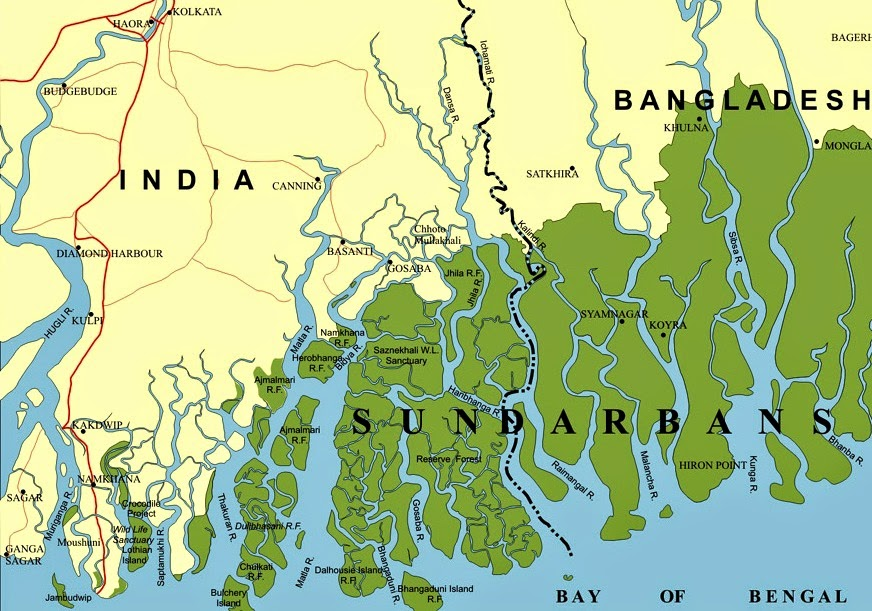
- Severe cyclones and flooding in Sundarbans delta had also reduced the land for agriculture, which is the major source of livelihood.
- While restrictions were imposed by bordering countries, smugglers and traffickers operating in the affected region targeted widows and men desperate to cross the border to India to find employment.
- Women were trafficked and often forced into hard labour and prostitution, with some working in sweatshops along the border.
- People displaced and migrating from rural to urban areas with no resources, skills or social networks at their destination, are targeted by agents and / or traffickers.
- The Sundarban region is characterised by intense, recurrent and sudden onset disasters, therefore millions of people across the Sundarbans are unable to work for most of the year.
- Suggestions:
- Recognise the Impact of Climate Change:
- Climate and development policy-makers urgently need to recognise that millions of people displaced by climate change are being, and will be, exposed to slavery in the coming decades.
- Develop Targeted Actions:
- Policymakers should therefore develop targeted actions, at national and international levels, to address the issue. The global and regional discourse on development and climate policy must consider trafficking and slavery risks due to climate shocks.
- Committed Funding:
- G 20 should commit to providing long-term funding to address anti-slavery efforts in the context of recurring displacement due to climate impacts.
- Coordination of Ongoing Initiatives:
- Several ongoing initiatives — including the Warsaw International Mechanism Task Force on Displacement (WIM TFD), the Sendai Framework, etc — should be coordinated to increase understanding of, and response to, growing risks of climate-induced migration / displacement and exposure to modern slavery.
- Effort to Tackle Modern Slavery:
- The report is a warning to world leaders in advance of the Conference of Parties (CoP 26) United Nations climate summit in Glasgow in November 2021.
- It calls on them to make sure efforts to address the climate emergency also tackle modern slavery.
- Recognise the Impact of Climate Change:
Forms of Modern Slavery
- Human Trafficking: The use of violence, threats or coercion to transport, recruit or harbour people in order to exploit them for purposes such as forced prostitution, labour, criminality, marriage or organ removal.
- Forced Labour: Any work or services people are forced to do against their will under threat of punishment.
- Debt Bondage/Bonded Labour: The world’s most widespread form of slavery. People trapped in poverty borrow money and are forced to work to pay off the debt, losing control over both their employment conditions and the debt.
- Descent–Based Slavery: Most traditional form, where people are treated as property, and their “slave” status was passed down the maternal line.
- Slavery of Children: When a child is exploited for someone else’s gain. This can include child trafficking, child soldiers, child marriage and child domestic slavery.
- Forced and Early Marriage: When someone is married against their will and cannot leave. Most child marriages can be considered slavery.
Biodiversity & Environment
Blue Flag Certification
Why in News
Recently, Foundation for Environment Education (FEE), Denmark has awarded the Blue Flag Certification to Kovalam (Tamil Nadu) and Eden (Puducherry), taking the total number of such beaches in the country to 10.
- A waving “Blue Flag" is an indication of 100% compliance to the 33 stringent criteria and sound health of the beach.
Key Points
- About:
- It is an internationally recognised eco-label that is accorded based on 33 criterias. These criterias are divided into 4 major heads namely,
- Environmental education and information
- Bathing water quality
- Environmental management
- Conservation and safety services in the beaches
- Blue Flag beaches are considered the cleanest beaches of the world. It is an eco-tourism model endeavouring to provide the tourists/beachgoers clean and hygienic bathing water, facilities, a safe and healthy environment and sustainable development of the area.
- It is accorded by the international jury composed of eminent members - United Nations Environment Programme (UNEP), United Nations World Tourism Organisation (UNWTO), Denmark-based NGO Foundation for Environmental Education (FEE) and International Union for Conservation of Nature (IUCN).
- On the lines of Blue Flag certification, India has also launched its own eco-label BEAMS (Beach Environment & Aesthetics Management Services).
- It is an internationally recognised eco-label that is accorded based on 33 criterias. These criterias are divided into 4 major heads namely,
- Other Eight Beaches which have Received the Certification:
- Shivrajpur in Gujarat,
- Ghoghla in Daman & Diu,
- Kasarkod in Karnataka and,
- Padubidri beach in Karnataka,
- Kappad in Kerala,
- Rushikonda in Andhra Pradesh,
- Golden beach of Odisha,
- Radhanagar beach in Andaman and Nicobar.
BEAMS
- Beach Environment & Aesthetics Management Services comes under ICZM (Integrated Coastal Zone Management) project.
- This was launched by the Society of Integrated Coastal Management (SICOM) and the Union Ministry of Environment, Forest and Climate Change (MoEFCC).
- The objectives of BEAMS program is to:
- Abate pollution in coastal waters,
- Promote sustainable development of beach facilities,
- Protect & conserve coastal ecosystems & natural resources,
- Strive and maintain high standards of cleanliness,
- Hygiene & safety for beachgoers in accordance with coastal environment & regulations.
- It has helped in saving 1,100 ml/year of municipal water through recycling; educating around 1,25,000 beachgoers about responsible behaviour at the beaches; providing alternate livelihood opportunities to 500 fishermen families through pollution abatement, safety and services and has also increased footfall for recreation activities at the beaches by approximately 80% leading to economic development.
Indian Economy
FDI Inflows
Why in News
Foreign Direct Investment (FDI) inflows grew 62% during the first four months (April-July period) of current FY 2021-22 over corresponding period last year (2020).
- India attracted a total FDI inflow of USD 27.37 billion during the four months.
- In the FY 2020-21, India saw growth of 10% (to $82 bn) in FDI.
Key Points
- FDI Equity:
- FDI equity inflow grew by 112% in the April-July period of FY 2021-22 (USD 20.42 billion) compared to the year ago period.
- Top Sectors:
- The Automobile Industry has emerged as the top sector with 23% share of the total FDI Equity inflow followed by Computer Software & Hardware (18%) and Services Sector (10%) respectively.
- Top FDI Destinations:
- Karnataka is the top recipient state for the period with 45% share of the total FDI Equity inflows followed by Maharashtra (23%) and Delhi (12%).
Foreign Direct Investment
- Definition:
- FDI is the process whereby residents of one country (the home country) acquire ownership of assets for the purpose of controlling the production, distribution and other activities of a firm in another country (the host country).
- It is different from Foreign Portfolio Investment where the foreign entity merely buys stocks and bonds of a company. FPI does not provide the investor with control over the business.
- FDI is the process whereby residents of one country (the home country) acquire ownership of assets for the purpose of controlling the production, distribution and other activities of a firm in another country (the host country).
- Three Components:
- Equity capital: It is the foreign direct investor’s purchase of shares of an enterprise in a country other than its own.
- Reinvested earnings: It comprises the direct investors’ share of earnings not distributed as dividends by affiliates, or earnings not remitted to the direct investor. Such retained profits by affiliates are reinvested.
- Intra-company loans: These refer to short- or long-term borrowing and lending of funds between direct investors (or enterprises) and affiliate enterprises.
- Routes through which India gets FDI:
- Automatic Route: In this, the foreign entity does not require the prior approval of the government or the RBI (Reserve Bank of India).
- Government Route: In this, the foreign entity has to take the approval of the government.
- The Foreign Investment Facilitation Portal (FIFP) facilitates the single window clearance of applications which are through approval route. It is administered by the Department for Promotion of Industry and Internal Trade (DPIIT), Ministry of Commerce and Industry.
- Government Measures to Promote FDI:
- Factors such as favourable demographics, impressive mobile and internet penetration, massive consumption and technology uptake, played an important role in attracting the investments.
- Launch of Schemes attracting investments, such as, National technical Textile Mission, Production Linked Incentive Scheme, Pradhan Mantri Kisan SAMPADA Yojana, etc.
- The government has elaborated upon the initiatives under the Atmanirbhar Bharat to encourage investments in different sectors.
- As a part of its Make in India initiative to promote domestic manufacturing, India deregulated FDI rules for several sectors over the last few years.
Indian Heritage & Culture
Sree Padmanabhaswamy Temple
Why in News
Recently, the Supreme Court (SC) has declined a plea filed by Sree Padmanabhaswamy Temple Trust seeking to exempt it from the audit of 25 years as ordered by the court last year (2020).
Key Points
- About:
- The Temple has been in the news since 2011 after the discovery of treasure worth over Rs. 1 lakh crore in its underground vaults.
- The SC in 2011 said that, as per customary law, the members of the royal family have the shebait rights even after the death of the last ruler.
- Shebait rights means the right to manage the financial affairs of the deity.
- The Padmanabhaswamy Temple Trust has been created by the former Travancore royal family.
- However, the court directed the setting up of an administrative committee with the Thiruvananthapuram District Judge as its chairperson, for transparent administration of the Temple in the future.
- The trust argues that since it had been constituted (on earlier orders by the court) to oversee rituals of the Temple, with no role in the administration, it is a distinct entity from the temple and could not be included in the call for an audit.
- According to the Administrative Committee, it is in great financial stress and the offerings are not sufficient to meet the expenses, seeking an audit of the temple-related trust run by the Travancore royal family.
- Sree Padmanabhaswamy Temple:

- According to Historians, the temple dates back to the 8th century but the present structure was built in the 18th century by the then Travancore Maharaja Marthanda Varma.
- The temple was initially made of wood but later it was constructed with granite.
- The temple is built in the unique Chera style of architecture, and its main deity is Lord Vishnu who is found in the Anantha Shayana posture (reclined posture of eternal yoga) on Adishesha or king of all serpents.
- It is known to be one of the 108 holy temples associated with Vaishnavism in India.
Agriculture
New Varieties of Turmeric
Why in News
Recently, a high-yielding curcuminoid-rich variety of turmeric named CIM-Pitamber and the NBRI’s (National Botanical Research Institute) Keshari variety have been introduced in Nabarangpur (One of the Aspirational Districts) of Odisha.
Key Points
- CIM-Pitamber:
- About:
- It is a high-yielding curcuminoid-rich variety of turmeric developed by Central Institute of Medicinal and Aromatic Plants (CIMAP).
- High yielding varieties (HYV) of seeds are those seeds which produce huge quantities of crops particularly wheat and rice.
- Regular supply of water, maximum use of fertilisers and use of pesticides in an accurate proportion is needed to use these seeds.
- In this variety, curcuminoid content is 12.5% more than the existing variety.
- Curcuminoid is a substance derived from turmeric which has anti-cancer properties, anti-inflammatory, anti-aging, anti-diabetic and has several medicinal properties.
- It is a high-yielding curcuminoid-rich variety of turmeric developed by Central Institute of Medicinal and Aromatic Plants (CIMAP).
- Benefits:
- It can yield 50% more than the existing varieties of turmeric and help farmers. It is also tolerant to the leaf blotch disease of turmeric.
- Turmeric with high content of curcuminoid is preferred by European nations and North America. Export and sale value will be more if curcumin content is more.
- About:
- Keshari variety:
- It is tolerant to low temperature and frost during winter. It has a longer growth period as compared to other varieties, which directly reflects higher fresh rhizome yield of high quality.
- In comparison to other existing varieties, there is less problem of yellowing and falling of leaves in this variety during winter, which leads to extending the life period of this variety.
- The total curcuminoid content is around 1.16 %, which is also more than other existing cultivated varieties of north India.
- Turmeric:
- Turmeric is a flowering plant, Curcuma longa of the ginger family, it is used as condiment, dye, drug and cosmetic in addition to its use in religious ceremonies.
- Its color comes mainly from curcumin, a bright yellow phenolic compound.
- India is a leading producer and exporter of turmeric in the world. India produces 80% of turmeric in the world.
- Telangana was the leading producer of turmeric in India during 2018. Maharashtra and Tamil Nadu were second and third in the ranking that year.
- It can be grown in diverse tropical conditions from sea level to 1500 m above sea level, at a temperature range of 20-35º C with an annual rainfall of 1500 mm or more, under rainfed or irrigated conditions.
Central Institute of Medicinal and Aromatic Plants
- It is a frontier plant research laboratory of Council of Scientific and Industrial Research (CSIR), established in 1959.
- It is steering multidisciplinary high quality research in biological and chemical sciences and extending technologies and services to the farmers and entrepreneurs of medicinal and aromatic plants (MAPs).
- It is headquartered in Lucknow.
National Botanical Research Institute
- It is one of the constituent research institutes of the CSIR set up in 1953. It is headquartered in Lucknow.
- It undertakes basic and applied research on various aspects of plant science, including documentation, systematics, conservation, prospection, and genetic improvement.
Important Facts For Prelims
Single Window System for Investors
Why in News
The Ministry of Commerce and Industry has launched the national single window system for investors and businesses to improve Ease of Doing Business (EoDB).
- India was placed at 63rd position in the World Bank’s ease of doing business report, 2020 out of 190 countries. Recently, the World Bank has decided to discontinue 'Doing Business' reports.
Key Points
- About:
- DPIIT along with Invest India initiated the process of developing the portal as a National Single Window System (NSWS).
- DPIIT (Department for Promotion of Industry and Internal Trade) comes under the Ministry of Commerce and Industry.
- Invest India is the National Investment Promotion and Facilitation Agency of India and acts as the first point of reference for investors in India.
- The portal offers a single dashboard, allowing businesses to apply for clearances, track progress and respond to queries.
- It would become a “one stop shop” for state and Central government compliances and bring transparency, accountability and responsiveness in the ecosystem.
- It will also offer a Know Your Approvals service to inform businesses of the details of all the approvals they need to obtain as well as a common registration form, document repository and e-communication module.
- It will provide strength to other schemes e.g. Make in India, Startup India, PLI scheme etc.
- DPIIT along with Invest India initiated the process of developing the portal as a National Single Window System (NSWS).
- Other Initiatives to improve EoDB:
- In the Union Budget speech 2020, the Investment Clearance Cell (ICC) was announced.
- ICC will provide “end to end” facilitation and support to investors, including pre-investment advisory, provide information related to land banks and facilitate clearances at Centre and State level. The cell was proposed to operate through an online digital portal.
- Amendments to Insolvency and Bankruptcy Code (IBC) and Decriminalisation under Companies Act, 2013.
- Reduction of corporate tax from 30% to 25% for mid-sized companies.
- The Ministry of Corporate Affairs (MCA), has initiated the MCA21 project, which enables easy and secure access to MCA services in an assisted manner for corporate entities, professionals, and the general public.
- It has also launched the Simplified Proforma for Incorporating Company Electronically Plus (SPICe+) web form.
- The Central Board of Indirect Taxes & Customs (CBIC) has launched eSanchit (e-Storage and Computerized Handling of Indirect Tax documents) for paperless processing, uploading of supporting documents and to facilitate the trading across Borders.
- E-assessment scheme for taxpayers.
- In the Union Budget speech 2020, the Investment Clearance Cell (ICC) was announced.
Important Facts For Prelims
Rabi Crops
Why in News
Recently, the Government of India has inaugurated the National Conference on Agriculture for Rabi campaign 2021-22.
Key Points
| Kharif Crops | Rabi Crops |
| Crops that are sown during the southwest monsoon season are called kharif or monsoon crops. | Those that are sown around the Retreating Monsoon and Northeast monsoon season, which begins by October are called rabi or winter crops. |
| These crops are sown at the beginning of the season around end May to early June and are harvested post the monsoon rains beginning October. | The harvest for these crops happens typically during April and May, during the summer season. |
| These crops depend on the rainfall patterns. | These crops are not much affected by the rainfall. |
| Rice, maize, pulses such as urad, moong dal and millets are among the key kharif crops. | Major Rabi crops are wheat, gram, peas, barley etc. |
| It requires a lot of water and hot weather to grow. | A warm climate is required for seed germination and cold climate for the growth of crops. |
|
Zaid Crops
|
|
Important Facts For Prelims
Surya Kiran XV
Why in News
Recently, the armies of India and Nepal have started the 15th edition of joint military exercise ‘Surya Kiran’ at Pithoragarh in the Indian state of Uttarakhand.
Key Points
- The biannual exercise, which takes place alternately in both countries.
- The main objective of this exercise is to:
- Establish military relations in inaccessible mountainous areas by the soldiers of both countries,
- Provide humanitarian assistance under disaster management,
- Get training in anti-terrorist operations,
- Build interoperability and sharing expertise between the two countries.
- The 14th edition of the exercise took place in Saljhandi, Nepal in 2019.

